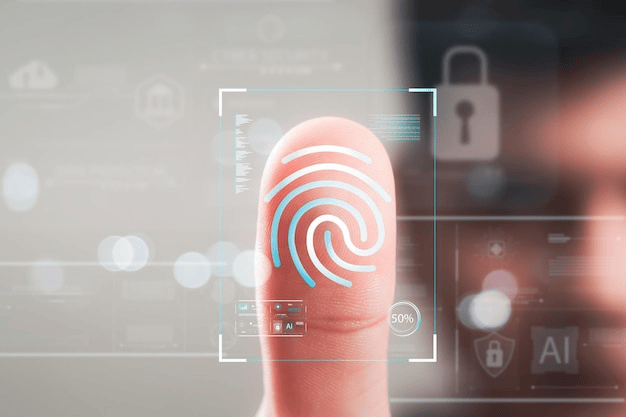If you’ve been told you need to get fingerprinted—whether for a job, a background check, licensing, immigration, or adoption—you might be wondering: What’s the difference between LiveScan and traditional ink fingerprinting? And more importantly, which one should you get?
Both methods serve the same ultimate purpose: capturing your fingerprints to run a criminal history check or verify your identity. But there are key differences in how the prints are taken, where they go, and what they’re used for.
In this post, we’ll break down the differences between LiveScan and ink fingerprinting, and help you figure out which method is right for your situation.
What Is LiveScan Fingerprinting?
LiveScan is a digital fingerprinting method that captures your fingerprints electronically using a scanner—no ink required. The prints are immediately submitted to the appropriate government agency (like the FBI or your state’s Department of Justice) for a background check.
How it works:
- Your fingers are scanned using a special device
- The images are reviewed for quality and clarity in real time
- The prints are electronically transmitted to the receiving agency
Used for:
- State and federal background checks
- Employment screenings
- Professional licensing
- Volunteer clearances
- Immigration cases (in some instances)
What Is Ink Fingerprinting?
Ink fingerprinting is the traditional method of rolling your fingers in black ink and pressing them onto a paper fingerprint card (usually the FD-258 form). These physical cards are then mailed to the appropriate agency for processing.
How it works:
- Each finger is rolled in ink and transferred to a fingerprint card
- The completed card is sent by mail to the requesting agency
- Processing begins once the card is received and scanned
Used for:
- Federal background checks (especially when LiveScan is not accepted)
- Out-of-state licensing applications
- FBI checks for personal review or immigration
- International background checks
- Some law enforcement or court-related procedures
Key Differences Between LiveScan and Ink
Let’s break down the major distinctions between the two:
| Feature | LiveScan | Ink Fingerprinting |
| Format | Digital (electronic) | Paper (physical) |
| Speed | Fast (results in 24–72 hours) | Slower (1–3 weeks or more) |
| Submission | Sent electronically | Mailed manually |
| Error Rate | Low (real-time quality check) | Higher (smudges, rejections more common) |
| Who Accepts It | State and federal agencies | FBI, out-of-state licensing boards, foreign governments |
| Ideal For | Jobs, state licenses, in-state clearances | Immigration, FBI self-checks, out-of-state licenses |
Which One Do You Need?
Now that you know the differences, how do you know which method to choose? Here’s a quick guide:
✅ Choose LiveScan if…
- You’re applying for a job in New Jersey or most other states
- You need a background check for a state-issued professional license
- You’re volunteering with an organization that uses state databases
- Your request form or employer provides a LiveScan ORI number
- You want faster results with fewer chances of error
LiveScan is the go-to method for most modern background checks. It’s especially common for employment, childcare, healthcare, real estate, education, and public safety roles.
✅ Choose Ink Fingerprinting if…
- You’re submitting an FBI Identity History Summary Check (personal review)
- You need fingerprints for immigration, a foreign visa, or international adoption
- You’re applying for a professional license in a different state
- Your employer or agency specifically asks for an FD-258 card
- You’re in an area where LiveScan isn’t available
Ink cards are often the preferred or only option when the receiving agency doesn’t accept electronic submissions, which is still common in certain federal and international processes.
Can You Convert Ink to LiveScan or Vice Versa?
It’s important to understand that LiveScan and ink fingerprinting are not interchangeable. You can’t send a LiveScan to an agency that only accepts ink cards, and vice versa.
However, some providers (like us!) can digitally scan ink fingerprints to create a digital submission when needed—or print ink cards from digital LiveScan data. But this depends on the agency’s requirements, so always check before proceeding.
What If You’re Not Sure Which You Need?
If you’re uncertain whether you need LiveScan or ink, follow these steps:
- Check your request form or instructions – Look for keywords like “LiveScan,” “FD-258,” or “ORI number.”
- Ask your employer or licensing board – They’ll tell you exactly what format is required.
- Contact your fingerprinting provider – A reputable provider can guide you based on your situation and documentation.
Final Thoughts
Both LiveScan and ink fingerprinting are useful, depending on the purpose of your background check. LiveScan is faster, more efficient, and widely accepted, especially for in-state jobs and licenses. Ink fingerprinting, while older, is still essential for federal checks, out-of-state applications, and international processes.
Knowing which one you need will save you time, money, and potential delays in your application or clearance process. We recommend newport beach livescan.

